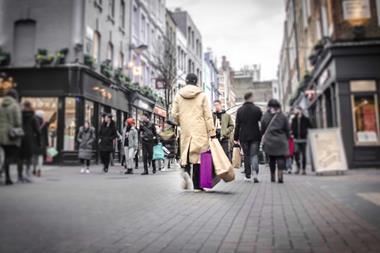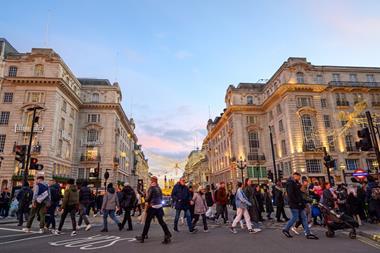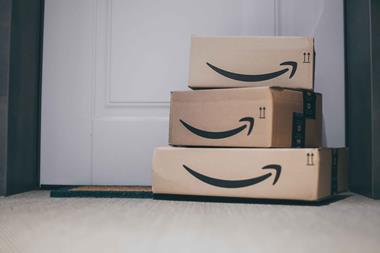The number of shoppers visiting high streets and malls rose in 2022, but retail park numbers decreased, the latest figures suggest.
According to the BRC-Sensormatic IQ Footfall Monitor, total UK footfall increased by 15.1% year on year over the festive period.
High streets saw a 19.7% uptick and shopping centres experienced a 13.4% rise, but retail parks dropped by 1.6%.
Total UK footfall for 2022 was still 11.8% below pre-pandemic levels but a vast improvement on 2021, which was down 33.2%.
In December, total UK footfall decreased by 7.3% (year on three years – yo3y) – which was 6.0 percentage points better than November 2022 (yo3y) and the three-month average decline of 10.2%.
On the high street, footfall fell by 9.3% in December (yo3y), a 4.3 percentage point improvement from November and better than the three-month average decline of 11.0%.
Shopping centre footfall dropped by 19.9% (yo3y), 3.3 percentage points better than in November 2022 and an improvement on the three-month average decline of 20.9%.
Retail parks saw footfall decrease by 5.2% (yo3y), 1.0 percentage points worse than last month’s rate and worse than the three-month average decline of 4.5%.
Northern Ireland saw the shallowest footfall decline of all nations and regions at -3.0%, followed by England at -8.7% and Wales at -9.6%, while Scotland saw the steepest drop at -9.9%.
BRC chief executive Helen Dickinson said: “Footfall reached its highest level since the start of the pandemic in December. A combination of rail disruption and the cold snap kept many shoppers from visiting town centres and high streets in the last week before Christmas. Meanwhile, the postal strikes forced others to head in for the last week to secure last-minute gifts in-store.”
She warned that historically low consumer confidence and 30-year-high inflation made for an exceptionally difficult year for consumers and retailers, with footfall down over 10% on pre-pandemic levels.
“Nonetheless, this was still a significant improvement on the previous two years when the pandemic kept many people at home,” she added.
“Although retailers’ input costs show little sign of easing in 2023, they continue to do all they can to keep prices affordable and tempt customers in.”
























No comments yet